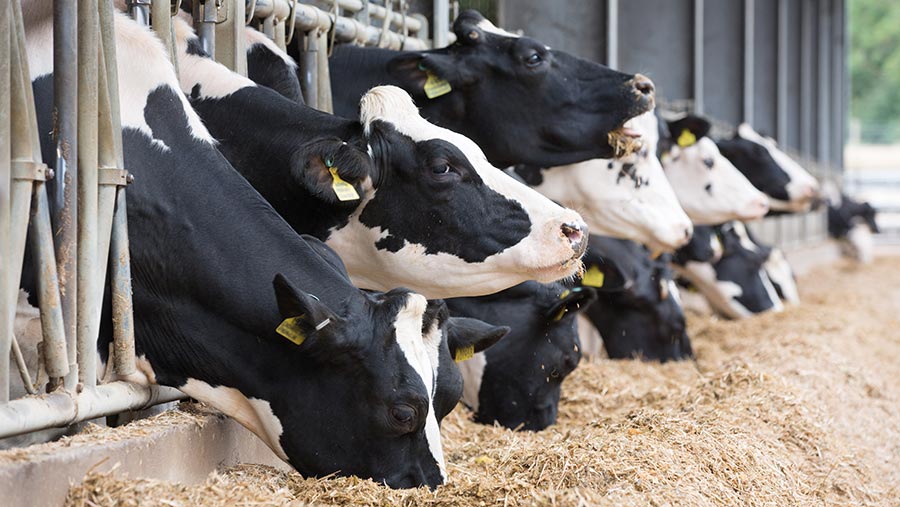Advice on handling cows in robotic systems
 © Tim Scrivener
© Tim Scrivener Efficient handling is essential to take full advantage of a robotic milking system. Yet a key aspect regularly overlooked in planning new units and retrofitted robots is how to handle cows for routine tasks.
In a conventional setup – where cows are used to being herded – artificial insemination (AI), foot-bathing and foot-trimming, TB testing and vet visits are all geared around the milking parlour and cow behaviour in that environment.
See also: How to improve handling systems by thinking like a cow
However, cows milked through robots have their own routine. They choose when to eat, lie down and socialise, and how often to be milked.
Even scraping passages becomes an automated job to avoid disturbing them, so cows really can suit themselves, says consultant Nigel Hardie of The Dairy Group.
“In parlour milking, you are driving cows to milking. Once they are in a robotic system, they become very relaxed and it’s no longer normal for them to be herded. So how are you going to treat the herd as a herd?” he says.
Tasks such as TB testing or herd vaccinations can become an issue as they bring disruption, while administering antibiotics for mastitis is tricky, he points out.
“People think they can treat cows in a robot – some machines have easier access than others – but it should be for milking only, not a place to jab a cow. This will negatively affect cow behaviour and could put her off visiting.”
Handling options
Locking yokes are the simplest option to handle cows with the least disturbance, but not the cheapest.
“They are used daily, so are the least invasive and cows get used to them. But you can’t do it all in a yoke. And the crush isn’t the best place because it’s not clean and [access is at] the wrong angle for treating mastitis.”
Nigel has seen farms where the milking equipment has been removed from the old parlour to create a race on the sides.
A removable cover over the pit can then give the operator different height options: standing in the pit to treat mastitis, or on the cover to work on cows in the race.
Regular foot-bathing is probably the hardest task to accommodate, he says.
Options include:
- A foot-bath at every robot
- A race with cows going through at certain times of day
- Siting the robot on a cross-passage in the cubicles and driving cows through it.
Whichever option is chosen, it is important to compare the cost of adding one foot-bath to every robot with the time taken to put the herd through one foot-bath.
Space is also needed for foot-trimming, although a permanent crush with a segregation gate to draw one to two cows each day, rather than groups of 30-40 cows, will reduce the area needed and avoid cows having to stand around.
Trimming little and often also helps lameness.
Research systems
He says it is important to spend a year researching robotic systems, visiting as many different farm setups as possible before committing.
“There is a cow benefit and a labour benefit. You don’t want to replace the graft of twice-daily milking with a different kind of graft.
“Ask yourself: how do I want to do the vet visit, dry off cows, or TB test – and what’s the cost?
“In a brand-new setup, make it perfect from the start. This is less costly than a retrofit and you get benefit from the new shed just as much as the milking efficiency.”
